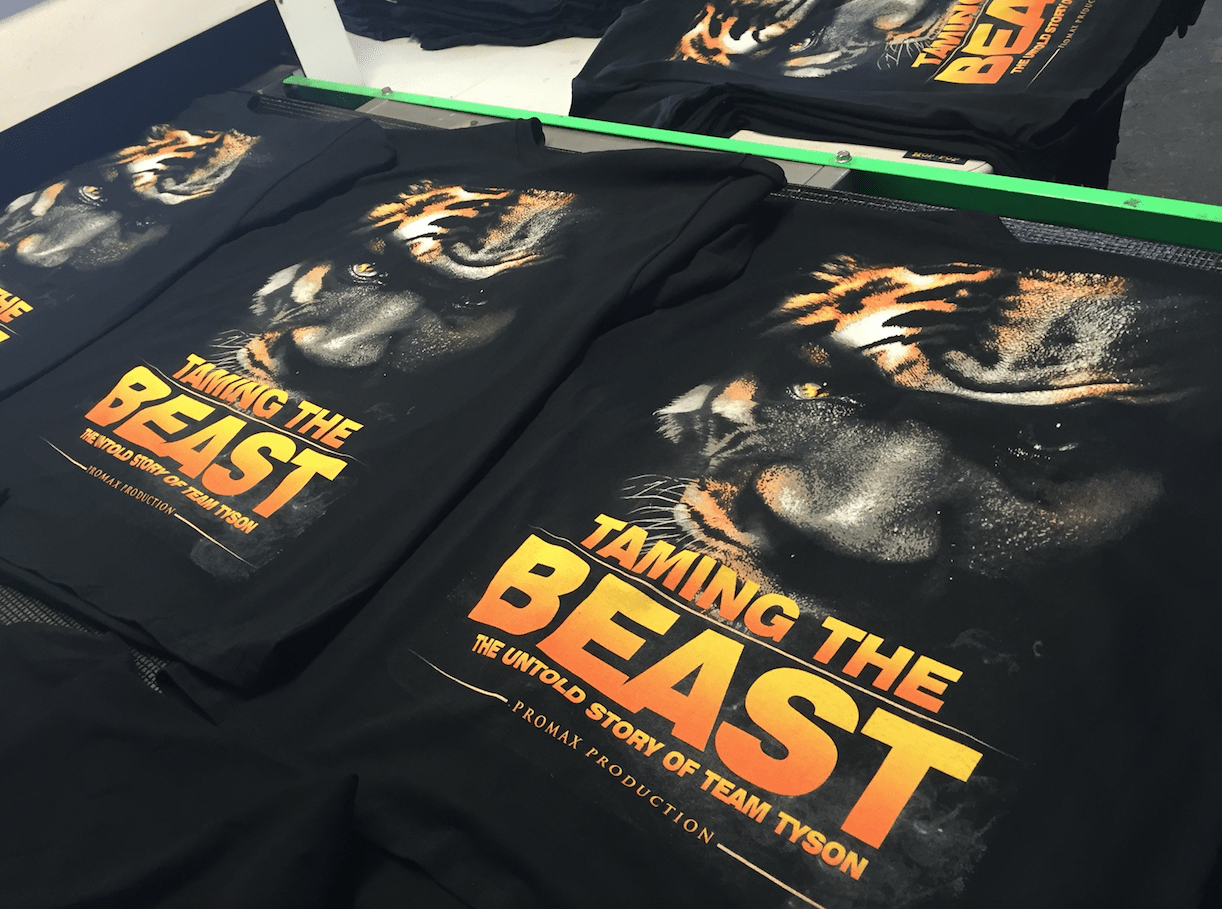Detailed Silk Screen Printing for Custom Art Apparel
Detailed Silk Screen Printing for Custom Art Apparel
Blog Article
Screen Printing Uncovered: Every Little Thing You Required to Find Out About Tee and Garment Printing Strategies
Display printing is an interesting technique that integrates art with technique, using endless possibilities for creativity. All set to explore the necessary elements that make screen publishing an art form?
The Fundamentals of Display Printing: Exactly How It Functions
When you dive into display printing, you'll find it's both an art and a science. At its core, screen printing involves developing a stencil, or display, that enables ink to pass through just in details locations.
Following, you'll mix your inks and prepare your printing surface area. Position the screen over the textile, then utilize a squeegee to press ink through the display onto the garment. This procedure needs accuracy, as you want clear, dynamic prints. After printing, you'll heal the ink with warmth, guaranteeing it follows the material and lasts through cleans. Each step is crucial, and mastering them will certainly boost your display printing skills, transforming easy garments right into one-of-a-kind, expressive pieces.
Kinds Of Screen Printing Methods
When you comprehend the essentials of screen printing, it's time to explore the numerous techniques that can raise your layouts. One preferred method is traditional display printing, where ink is pressed with a stenciled screen. This technique is terrific for bold, vibrant shades. After that there's water-based ink printing, which provides a softer feeling and is green, however it calls for a various technique to treating.
One more option is plastisol printing, recognized for its toughness and vibrant colors, making it a favorite for numerous brands. Experiment with halftone printing to produce gradient impacts and complex designs.
Necessary Tools for Screen Printing
To accomplish sensational outcomes in display printing, having the appropriate devices is basic. You'll require a strong display printing structure, which holds the mesh that transfers your design onto the garment. Next, spend in high-grade mops; these are vital for applying ink uniformly across the screen.
Choosing the Right Inks and Materials
When choosing inks and materials for screen printing, you need to think about the kind of ink that works ideal for your project. Consider textile compatibility to ensure your designs look wonderful and last long. Check out green ink alternatives to make your printing process extra lasting.
Kinds Of Screen Inks
Choosing the ideal screen ink is essential for attaining vivid, long lasting prints that fulfill your task's requirements. There are a number of sorts of display inks to analyze. Plastisol ink is preferred for its versatility and simplicity of use, providing superb color opacity on dark materials. Water-based ink, on the various other hand, uses a softer feeling and is eco-friendly, making it perfect for those looking to lessen their ecological influence. Release inks eliminate dye from the fabric, causing a soft, classic look but call for specific handling. Specialty inks, such as glow-in-the-dark or metallic, can add distinct impacts to your designs. Evaluate your project requirements and select the ink that aligns ideal with your wanted result.

Fabric Compatibility Considerations
Comprehending material compatibility is crucial for attaining top notch display prints, particularly given that various products react uniquely to numerous inks. When selecting inks, consider the material type-- cotton, polyester, or blends. For cotton, water-based inks function well, supplying soft qualities and breathability. Polyester, on the other hand, typically calls for plastisol inks for much better adhesion and vivid colors. If you're printing on blends, you might require to use a mix of both kinds. Constantly check your inks on sample material to assure they adhere properly and keep shade stability. Additionally, remember that material weight and texture can impact the final result, so picking the ideal ink and product combination is crucial for your task's success.
Eco-Friendly Ink Options
Environmentally friendly inks are ending up being a preferred choice for screen printers who want to lessen their ecological impact while maintaining quality. When choosing inks, take into consideration water-based inks, which are much less hazardous and simpler to clean up compared to traditional solvents.
Additionally, look for inks made from eco-friendly sources, such as soy or vegetable-based alternatives. By selecting the ideal inks and materials, you'll not only produce magnificent designs however additionally add to a more sustainable printing procedure. Make the button, and your prints will mirror your commitment to the setting!
Preparing Your Layout for Screen Printing

Submit Style Requirements
To guarantee your layout looks sharp and vivid on textile, you'll need to pay attention to file layout needs for screen printing. Begin with vector documents like AI or EPS, as they can be scaled without shedding high quality. If you use raster photos, choose high-resolution documents, such as TIFF or PNG, ideally at 300 DPI. Avoid making use of JPEGs, as they can shed clarity when resized. Make sure your style has a clear background to protect against undesirable white sides on your prints. Maintain shade settings in mind; CMYK is typical for screen printing, so convert your RGB designs accordingly - screen printing kit. By complying with these guidelines, you'll establish your art work up for an effective print.
Shade Separation Techniques
Color splitting up is an important step in preparing your style for screen printing, and understanding it can considerably improve your print quality. You'll require to break your style into individual shades, as each shade calls for a separate display during printing. Begin by identifying all the shades in your style and create layers for each one. You can use software program like Adobe Photoshop or Illustrator to isolate and different shades effectively. Be specific to conserve each layer as a different documents, usually in a format like TIFF or PSD. This accuracy not only ensures precise color representation but additionally enhances the printing procedure. By taking note of color splitting up, you'll achieve specialist and lively lead to your screen-printed garments.
Resolution and Dimension
Attaining the most effective cause screen printing begins with ensuring your layout has the appropriate resolution and size. Ideally, your artwork should go to the very least 300 DPI (dots per inch) for sharp, clear prints. Your final item might look pixelated and less than professional. if you utilize reduced resolution.
When it involves dimension, consider the measurements of your print area. Layout your art work to match the final print size, ideally creating it in the real measurements you'll be printing. By doing this, you'll stay clear of any type of unexpected scaling problems.
Constantly check your style in both vector and raster styles. Vector graphics can be scaled without shedding quality, making them suitable for display printing. Preparing appropriately will assure your style looks remarkable on every garment!
Step-by-Step Screen Printing Process
Screen printing is a dynamic process that permits you to develop vibrant layouts on different surfaces. To obtain begun, you'll need a display, emulsion, and your chosen ink. Initially, prepare your display by cleansing it extensively. Next, use the solution uniformly and allow it dry in a dark area. Once dry, expose your screen to light with your design put on it, which will harden the emulsion where the light hits, developing a pattern - screen printing kit.
Pour ink onto the screen and utilize a squeegee to push the ink with the stencil onto the textile. Raise the display thoroughly and let the print completely dry. You've successfully display printed your layout.
Tips for Successful Display Printing Projects
While you're diving into your display printing jobs, keep in mind that prep work is essential to success. Begin by gathering all your products-- inks, garments, mops, and screens. A tidy work area helps protect against unwanted errors, so clean prior to you begin.
Following, verify your art work is high-resolution and appropriately sized for your garment. Test your display for proper exposure and tidy it completely to avoid smudges. When blending your inks, comply with the manufacturer's guidelines to accomplish the right consistency.
Throughout printing, use even pressure with your squeegee for constant outcomes. Don't rush; take your time to confirm each print fulfills your standards. After printing, let your garments completely dry completely before taking care of or packaging them.
Lastly, always maintain an example of your help future reference. This method, you can analyze your development and enhance your strategies with time. Pleased printing!

Often Asked Inquiries
For how long Does It Take to Establish a Display Printing Task?
Establishing a screen printing job generally takes about thirty minutes to an hour. You'll prepare the displays, mix inks, and change the press. The time differs based on complexity and experience, so remain arranged!
Can I Print on Different Textile Keys In Utilizing the Exact Same Technique?
Yes, you can publish on various fabric kinds making use of the exact same method, but you'll need to readjust your inks and setups. Some fabrics absorb ink in a different way, so exploring guarantees the most effective outcomes for each and every product.
What Are Common Mistakes to Avoid in Display Printing?
When display printing, prevent typical mistakes like making use of the incorrect ink, disregarding correct direct exposure times, or missing custom screen printing pre-press checks. Always examine your configuration and keep clean displays to guarantee top quality results each time.
Just How Can I Appropriately Tidy and Preserve My Display Printing Devices?
To effectively tidy and maintain your display printing equipment, you must consistently wash displays with appropriate solvents, inspect mops for wear, and guarantee all devices are stored completely dry and dust-free. Consistency enhances and stops costly repair services efficiency.
Is Screen Printing Eco-friendly Contrasted to Other Techniques?
Display printing can be extra environmentally friendly than various other approaches, especially if you utilize water-based inks and eco-conscious products. By choosing sustainable materials and techniques, you reduce waste and minimize your influence on the world.
Display Printing Uncovered: Every Little Thing You Need to Know About Tee Shirt and Garment Printing Methods
At its core, display printing entails creating a stencil, or screen, that enables ink to pass with just in details locations. Position the screen over the material, after that use a squeegee to push ink through the display onto the garment. One preferred approach is traditional screen printing, where ink is pressed via a stenciled display.When picking inks and materials for screen printing, you need to take into account the type of ink that works finest for your task.
Report this page